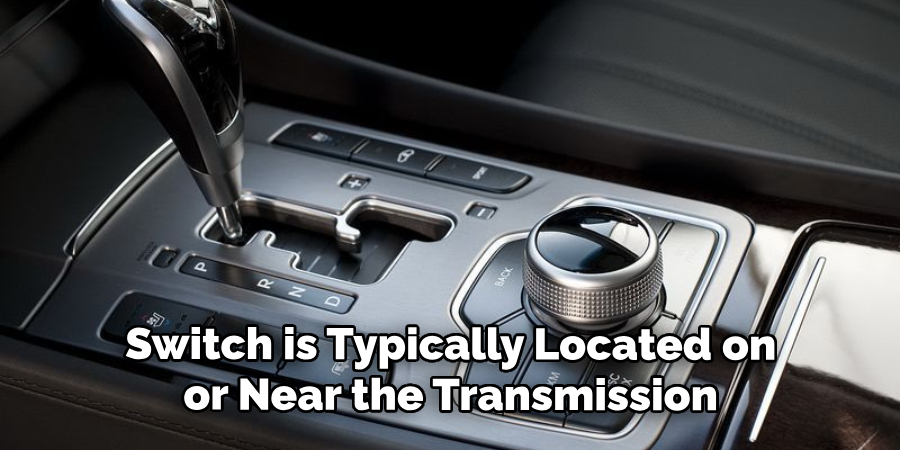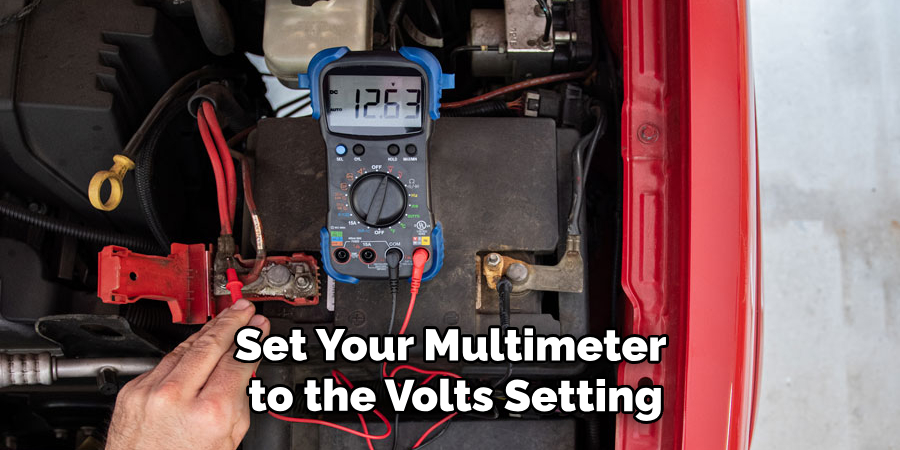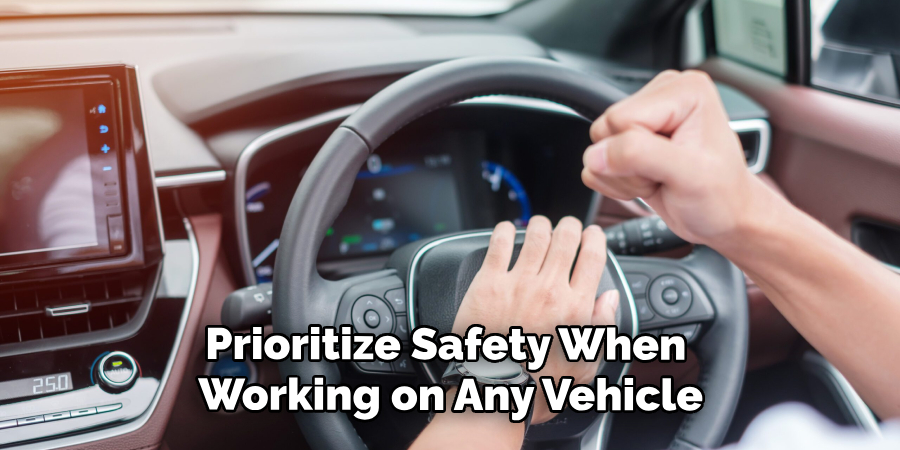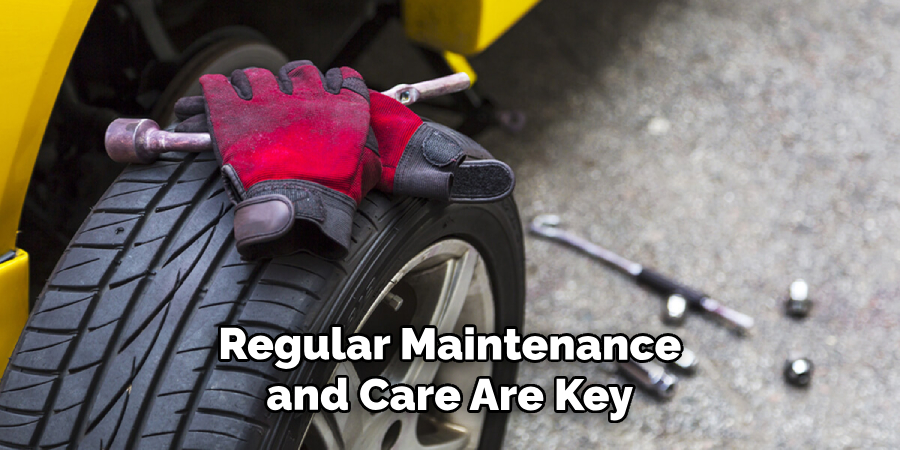The neutral safety switch is an important component in your vehicle’s transmission system that prevents the engine from starting unless the gearshift lever is in the park or neutral position. It ensures that your car only starts when it is safe to do so, preventing accidents and damage to your vehicle.

The main advantage of knowing how to test a neutral safety switch is that it allows you to troubleshoot and fix any potential issues with the switch. This can save you time and money by avoiding a trip to the mechanic. In this blog post, You will learn in detail how to test neutral safety switch.
Step-by-step Instructions for How to Test Neutral Safety Switch
Step 1: Inspect the Neutral Safety Switch
As soon as you encounter any issues with your vehicle, one of the first things to do is inspect the neutral safety switch. Look for any visible damage or signs of wear and tear. Before beginning the testing process, make sure you have all necessary tools on hand. This may include a multimeter, wire strippers, and a wiring diagram for your specific vehicle model.
Step 2: Locate the Neutral Safety Switch
The neutral safety switch is typically located on or near the transmission of your vehicle. Refer to your owner’s manual or search online for the exact location. For safety reasons, it is important to disconnect the negative terminal of your battery before proceeding with the testing process.

Step 3: Disconnect Wires
Using a wiring diagram, disconnect the wires connected to the neutral safety switch. Make sure to label them for easy reconnection later. Check for any signs of damage or corrosion on the wiring connected to the neutral safety switch. If there are any issues, they will need to be repaired before continuing with the testing.
Step 4: Set Multimeter
Set your multimeter to the ohms setting. This will allow you to test for continuity in the switch. Using the multimeter, touch one probe to each of the terminals on the neutral safety switch. If there is no continuity, this indicates a faulty switch and it will need to be replaced.
Step 5: Test for Voltage
Set your multimeter to the volts setting. Touch one probe to the ground wire and the other probe to each of the other wires connected to the neutral safety switch. If there is no voltage, this could indicate a wiring issue. In some vehicles, the neutral safety switch is integrated with the transmission range sensor. If this is the case for your vehicle, it will also need to be tested.

Step 6: Reconnect Wires
Once all testing is complete and any necessary repairs have been made, reconnect the wiring to the neutral safety switch according to the labeling from earlier. Finally, reconnect the negative terminal of your battery and test the neutral safety switch by starting your vehicle. If it starts without any issues, then the testing was successful. If not, further troubleshooting may be needed.
By following these step-by-step instructions, you can effectively test your neutral safety switch and ensure the smooth operation of your vehicle. Remember to always prioritize safety and consult a professional mechanic if you are unsure or uncomfortable with performing these tests on your own.
Safety Tips for How to Test Neutral Safety Switch
- Always Follow the Manufacturer’s Instructions – The first and foremost safety tip is to always follow the instructions provided by the manufacturer. Every vehicle may have different procedures for testing the neutral safety switch, so make sure to read through the manual carefully before starting the process.
- Wear Protective Gear – It is important to wear appropriate protective gear such as gloves and safety glasses when working on your vehicle. This will help protect you from any potential injuries while handling electrical components.
- Disconnect the Battery – Before starting to test the neutral safety switch, make sure to disconnect the negative terminal of your vehicle’s battery. This will prevent any electrical shocks or short circuits from occurring.
- Use a Voltmeter – To accurately test the neutral safety switch, use a voltmeter instead of a test light. A voltmeter will not only give more precise readings, but it is also safer to use as it does not draw any current from the electrical system.
- Work in a Well-ventilated area – When working on your vehicle, make sure to do so in a well-ventilated area. This will help prevent inhaling any fumes or gases that may be emitted from the vehicle’s exhaust or engine.
- Test in Neutral and Park – When testing the neutral safety switch, make sure to also test it in both neutral and park positions. This will ensure that the switch is functioning correctly in all settings.
- Seek Professional Help if Unsure – If you are unsure about how to test the neutral safety switch or do not have the necessary tools, it is always best to seek help from a professional mechanic. They will have the expertise and equipment to safely and accurately test the switch.

By following these safety tips, you can ensure a safe and successful test of your vehicle’s neutral safety switch. Remember to always prioritize safety when working on any vehicle. So, it is important that you understand the instructions properly before testing the neutral safety switch.
Are There Any Common Issues or Problems With Neutral Safety Switches That I Should Be Aware of?
Some common issues or problems with neutral safety switches include:
- Malfunctioning Switch: One of the most common issues with neutral safety switches is a malfunctioning switch that fails to detect whether the vehicle is in park or neutral. This can result in starting issues or even cause the engine not to start at all.
- Corrosion: Neutral safety switches are often exposed to the elements, which can lead to corrosion over time. This can cause the switch to become stuck or fail to function properly.
- Loose Connections: Like any electrical component, neutral safety switches rely on good connections to function correctly. If the connections become loose or corroded, it can lead to starting issues.
- Damaged Wiring: The wiring for a neutral safety switch can become damaged due to wear and tear or exposure to heat. This can cause the switch to malfunction and result in starting problems.
- Faulty Installation: If a neutral safety switch is not installed correctly, it may not function properly. It’s essential to follow proper installation procedures to ensure the switch is correctly aligned and connected.
- Wear and Tear: Over time, the internal components of a neutral safety switch can wear out, leading to malfunctioning. Regular maintenance and replacement of worn parts can help prevent this issue.
- Incompatible Replacement: If a neutral safety switch needs to be replaced, using an incompatible switch can cause issues. It’s crucial to use the correct replacement part for your specific vehicle make and model.
- Electrical Issues: In some cases, starting problems may not be caused by the switch itself but rather underlying electrical issues. It’s essential to have a mechanic diagnose any electrical problems before assuming it’s an issue with the neutral safety switch.
While neutral safety switches are designed to be reliable and long-lasting, there are several common issues or problems that can arise. It’s important to be aware of these potential issues and address them promptly to ensure your vehicle starts smoothly every time.

How Can You Prevent Your Neutral Safety Switch From Becoming Faulty in the Future?
There are several steps you can take to prevent your neutral safety switch from becoming faulty in the future.
- Regular Maintenance: One of the best ways to prevent any car component from malfunctioning is by keeping up with regular maintenance. This includes checking and replacing any worn out or damaged parts, including the neutral safety switch.
- Avoid Rough Handling: The neutral safety switch is a delicate component and can easily get damaged if handled roughly. Be careful when working around the area where the switch is located, and avoid any unnecessary force or pressure on it.
- Keep It Clean: Dirt and debris can build up on the neutral safety switch over time, causing it to malfunction. Regularly cleaning the surrounding area of the switch with a mild cleaner can help prevent this buildup and keep the switch functioning properly.
- Check for Loose Connections: Faulty connections can also lead to issues with the neutral safety switch. Make it a habit to regularly check for any loose or corroded connections and fix them immediately if found.
- Use Quality Parts: When replacing your neutral safety switch, make sure to use high-quality parts from a reputable brand. Cheaper, low-quality switches may save you money in the short term, but they are more likely to malfunction and cause problems in the future.
- Be Mindful of Driving Habits: Constantly shifting between gears without coming to a complete stop can put unnecessary strain on the neutral safety switch. Try to be mindful of your driving habits and make sure to come to a complete stop before shifting gears.
By following these simple steps, you can help prevent your neutral safety switch from becoming faulty in the future. Remember, regular maintenance and care are key to keeping all components of your car functioning properly.

Conclusion
In conclusion, the neutral safety switch plays a critical role in ensuring the safety and proper functioning of your vehicle. It is responsible for preventing your car from starting in gear, which could potentially cause accidents and damage to your transmission. Regularly testing your neutral safety switch can help you identify any issues early on and prevent major problems down the line.
When testing your neutral safety switch, be sure to follow proper safety precautions and consult your vehicle’s manual for specific instructions. It may also be helpful to have a professional mechanic perform the test to ensure accuracy. I hope this article has been beneficial for learning how to test neutral safety switch. Make Sure the precautionary measures are followed chronologically.

About
JeepFixes Team is a skilled author for Jeep Fixes, bringing 6 years of expertise in crafting a wide range of jeep fixes. With a strong background in jeep fixes work, JeepFixes Team’s knowledge spans various types of fixtures, from decorative pieces to functional hardware, blending precision with creativity. His passion for jeep fixes and design has made him a trusted resource in the industry.
Professional Focus:
Expert in Jeep Fixes : JeepFixes Team aesthetic specializes in creating durable and innovative jeep fixes, offering both appeal and functionality. His work reflects a deep understanding of jeep fixes techniques and materials.
Sustainability Advocate : He is dedicated to using sustainable practices, ensuring that every fixture is crafted with eco-friendly methods while maintaining high-quality standards.
In his writing for jeep fixes, JeepFixes Team provides valuable insights into the latest trends, techniques, and practical advice for those passionate about jeep fixes, whether they are professionals or DIY enthusiasts. His focus on combining artistry with engineering helps others discover the true potential of jeep in design.
